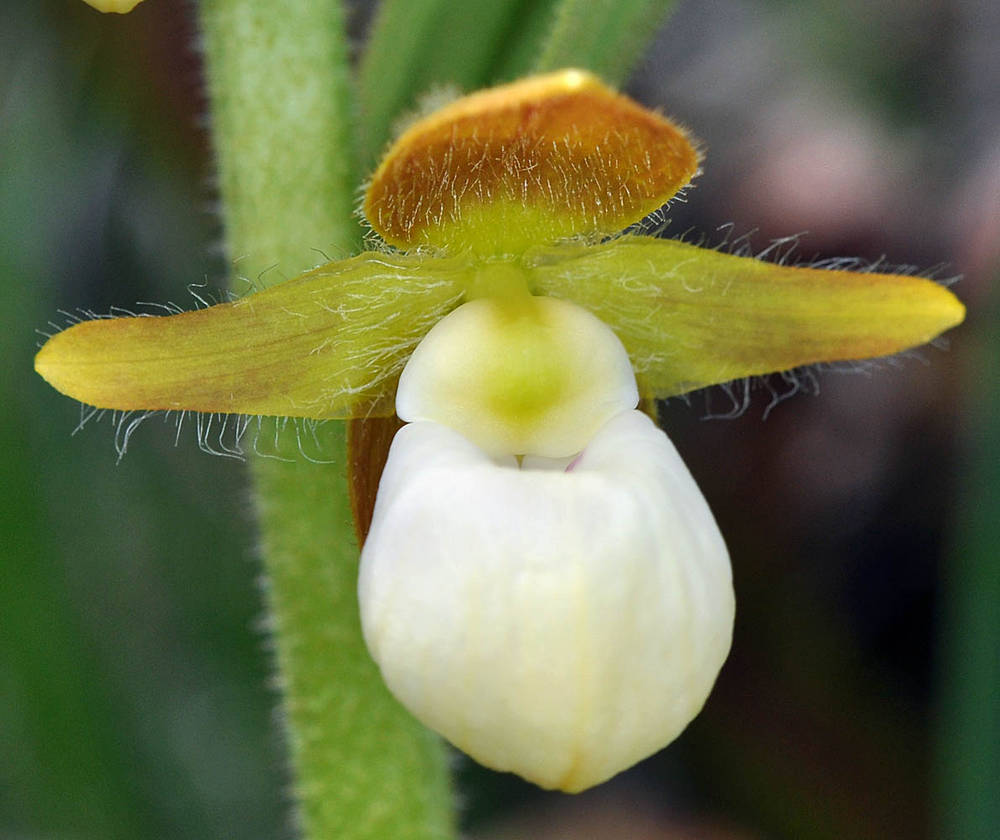Cypripedium californicum
Cypripedium
California lady slipper
lady's-slipper, lady slipper
erect, often pubescent.
alternate, 5–10, 5–15 × 2–6 cm, grading into bracts in the inflorescence.
opposite or alternate; ovate to elliptic, typically with distinct pleating, with sheathing bases.
elongated, 3–20-flowered.
elongated or compressed racemes.
dorsal sepal elliptic, 1.5–2 × 1–1.5 cm; yellowish green to pale brownish yellow;
lateral sepals connate nearly to tip, similar in color and shape to dorsal sepal;
petals lanceolate, 1–2 × 0.3–0.5 cm, yellow to yellowish green;
lip 1.5–2 × 1–1.5 cm, white occasionally with pink.
lateral sepals united, with distinct inflated lip;
stamens 2.
Cypripedium californicum
Cypripedium
Small streams, riversides, seepage slopes, usually on serpentine soils. Flowering Apr–Jul. 200–1600m. CR, Sisk. CA. Native.
Usually endemic to serpentine-derived soils, California lady slipper is often found growing with the carnivorous plant Darlingtonia californica in seepage slopes and small streams.
North America, Eurasia. Approximately 50 species; 3 species treated in Flora.
Lady slippers are unique among Oregon orchids in that they have two functional stamens, instead of one. Some authorities have treated Cypripedium as a distinct family, Cypripediaceae, based on this morphological feature.
James Riser
James Riser




